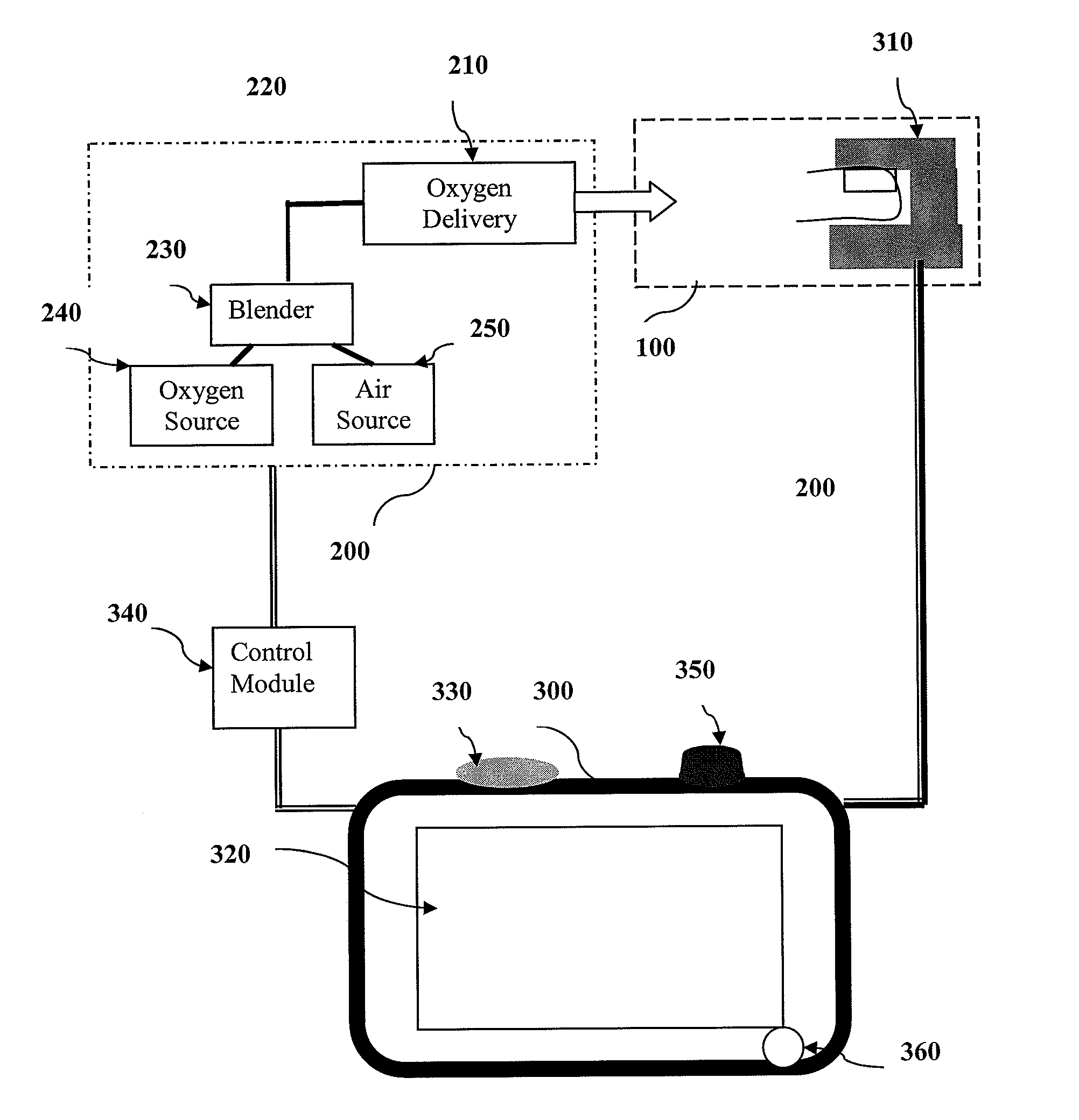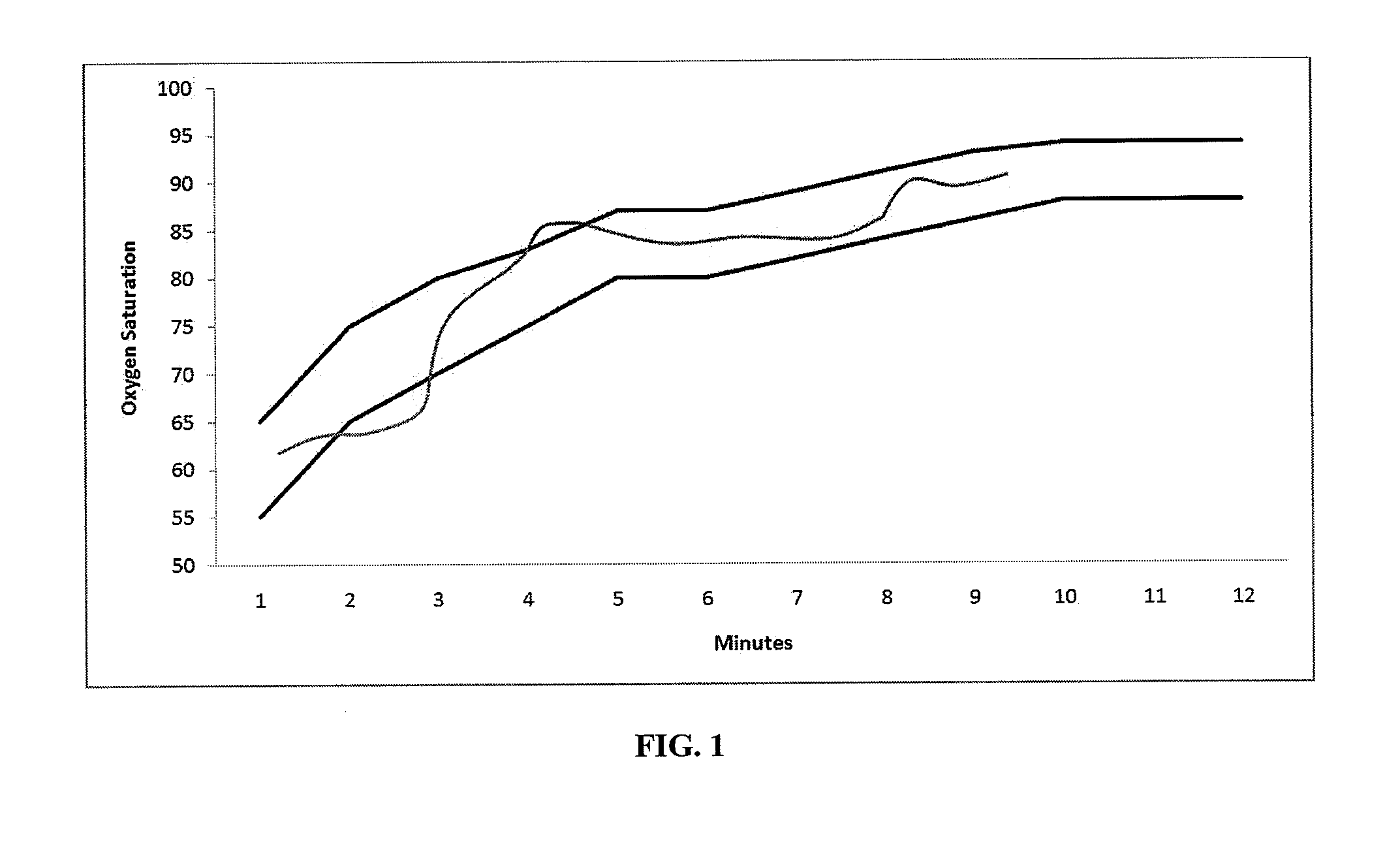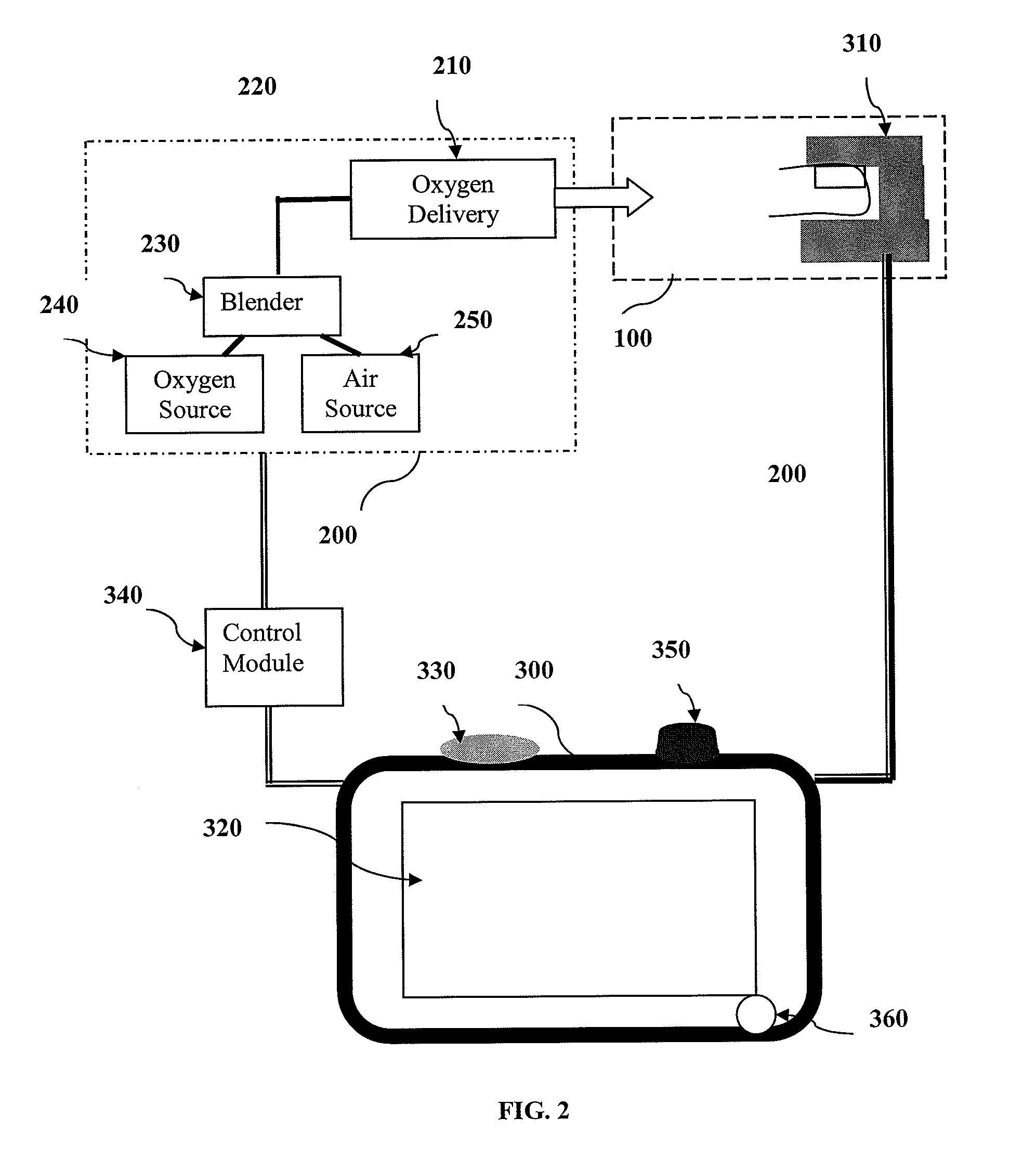Oxygenation procedures for newborns and devices for use therein
a technology for oxygenation procedures and newborns, which is applied in the field of obstetrics and pediatrics, can solve the problems of insufficient evidence to specify the concentration of oxygen (osub>2/sub>) to be used, no guidelines on how to use pulse oximeters, and clinicians are becoming increasingly concerned about the dangers of hyperoxia, so as to reduce the concentration of supplemental oxygen and avoid hyperoxia. , the effect of safe oxygen saturation valu
- Summary
- Abstract
- Description
- Claims
- Application Information
AI Technical Summary
Benefits of technology
Problems solved by technology
Method used
Image
Examples
example 1
Room Air Versus Oxygen Administration During Resuscitation of Preterm Infants
[0054]OBJECTIVE: Compare three O2 delivery strategies to determine which approach is most effective at remaining within a target transcutaneous oxygen saturation (SpO2) range of 85 to 92% and determine if using a protocol to titrate FiO2 (fraction of inspired oxygen in a gas mixture, used herein as concentration of supplemental oxygen) during resuscitation of preterm infants is feasible.
[0055]DESIGN / METHODS: Blinded, randomized control trial of delivery room resuscitation in infants 32 weeks gestation comparing three O2 strategies. The High O2 Burden (HOB) group received a static concentration of 100% O2. In the Moderate O2 Burden (MOB) and Low O2 Burden (LOB) groups, resuscitation started with 100% and 21% O2, respectively. The inspired oxygen concentration was adjusted by 20% every 15 seconds in the MOB and LOB groups until the target SpO2 range of 85% to 92% was reached. SpO2 measurements were recorded e...
PUM
 Login to View More
Login to View More Abstract
Description
Claims
Application Information
 Login to View More
Login to View More - R&D
- Intellectual Property
- Life Sciences
- Materials
- Tech Scout
- Unparalleled Data Quality
- Higher Quality Content
- 60% Fewer Hallucinations
Browse by: Latest US Patents, China's latest patents, Technical Efficacy Thesaurus, Application Domain, Technology Topic, Popular Technical Reports.
© 2025 PatSnap. All rights reserved.Legal|Privacy policy|Modern Slavery Act Transparency Statement|Sitemap|About US| Contact US: help@patsnap.com



